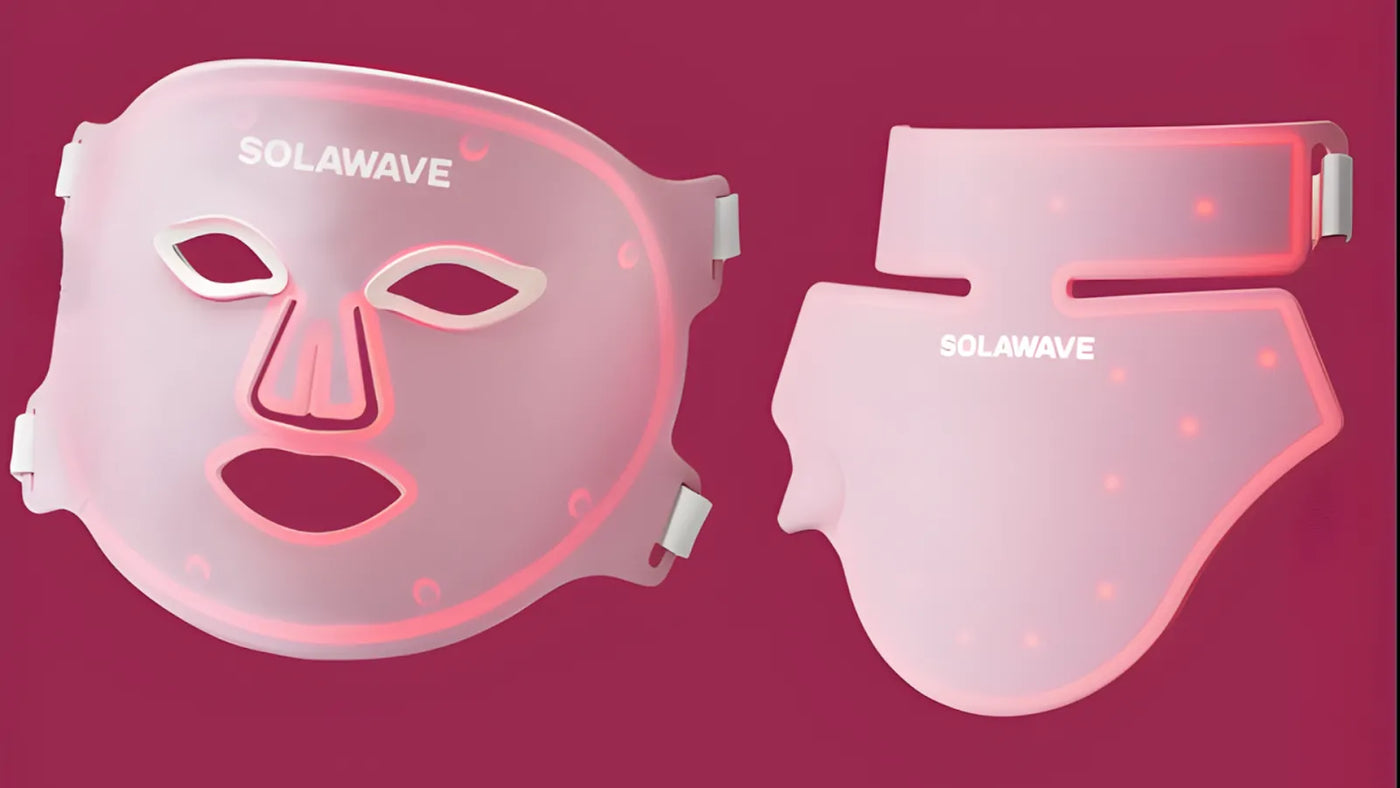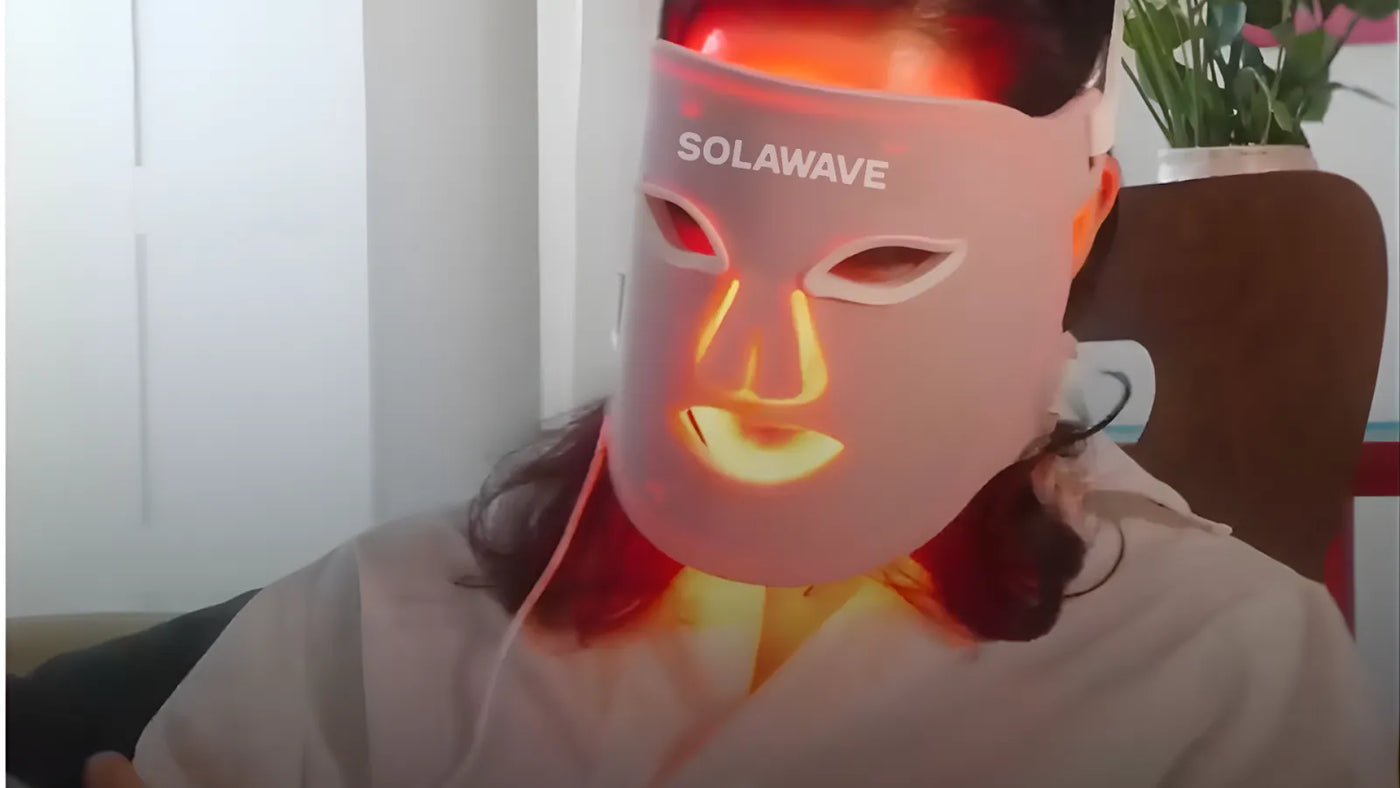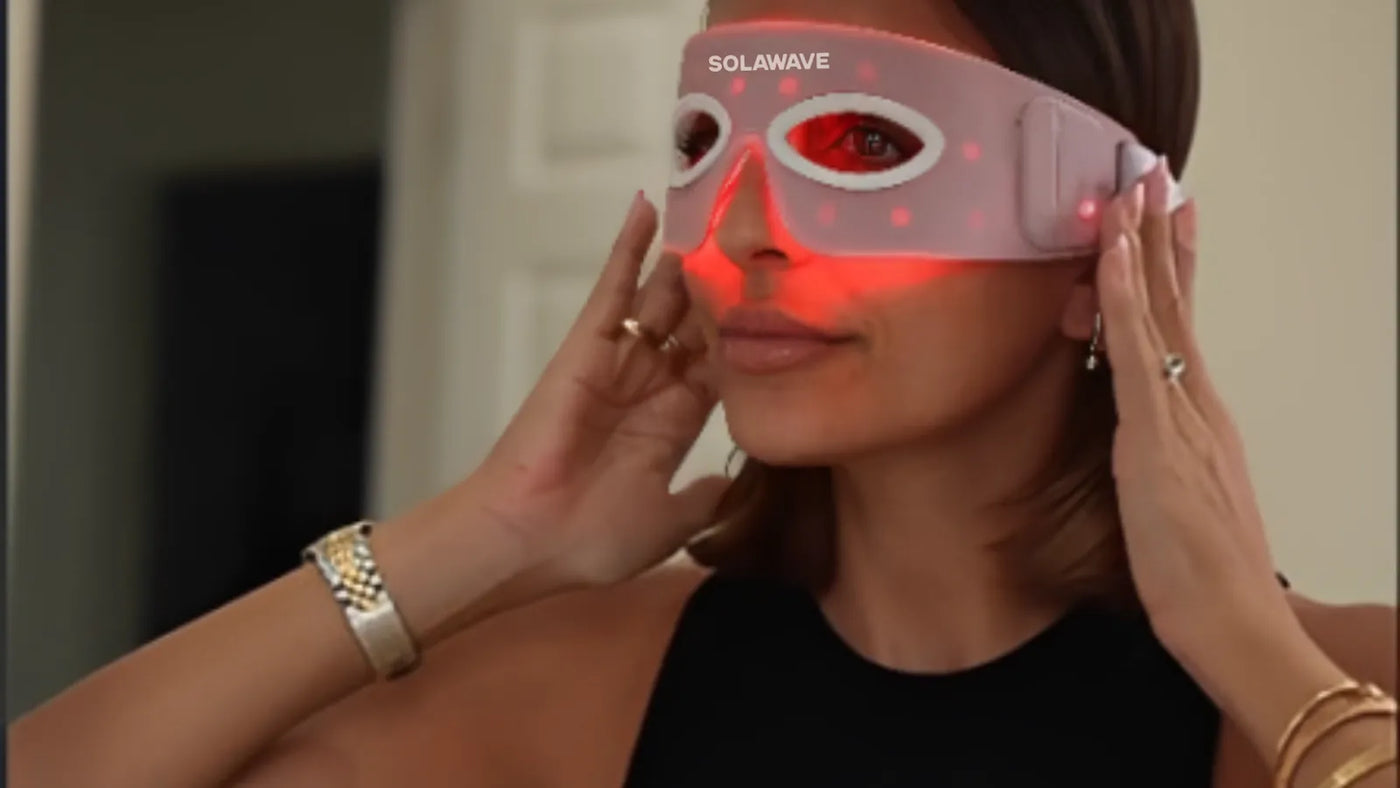

Red Light Therapy for Pain: Can It Help?
Red light therapy (RLT) has gained significant attention in recent years, especially among athletes and individuals looking to support muscle recovery and manage physical discomfort. This non-invasive approach uses specific wavelengths of red and near-infrared light to interact with your body’s tissues, and many people are exploring its potential benefits for post-workout recovery and relief from everyday aches.
In this article, you’ll learn about red light therapy devices that are specifically designed for muscle recovery and physical therapy. It’s important to understand that not all red light therapy devices are the same — those made for skincare will deliver on promises to combat wrinkles or acne-related inflammation, but they won't be able to deliver the same benefits as devices engineered for muscle recovery and pain relief.
Please also note that red light therapy is not a cure or treatment for any medical condition, disease, or skin condition. The information provided here is for educational purposes only, and you should always consult with a healthcare professional regarding any pain or health concerns.
What Is Red Light Therapy?
Red light therapy is a non-invasive technique that uses specific wavelengths of red and near-infrared light to interact with your body’s cells. When this light penetrates your skin, it can reach deeper tissues, where it’s believed to support cellular energy production and promote natural recovery processes. Many people turn to red light therapy for its potential to ease muscle soreness, reduce inflammation, and support overall physical well-being.
It’s important to recognize that not all red light therapy devices are created equal. Devices designed for muscle recovery and physical therapy typically use higher-powered lights and specific wavelengths that can reach deeper into your muscles and joints. These devices are engineered to deliver the intensity and coverage needed for larger areas of the body, making them suitable for athletes and anyone seeking relief from muscle or joint discomfort.
If you’re looking to support pain relief or reduce inflammation, make sure to choose the right type of device. Only devices designed for muscle recovery and physical therapy can deliver the depth and intensity needed to potentially impact deeper tissues, while other types of red light therapy devices such as those used in skincare are typically limited to surface-level effects.
How Red Light Therapy Supports Muscle Recovery and Pain Relief
Red light therapy is gaining recognition among athletes and active individuals for its potential to support muscle recovery and manage pain. This non-invasive technique uses specific wavelengths of red and near-infrared light, which can penetrate deeper than visible light to reach muscles, tendons, and joints. When these wavelengths are absorbed by your tissues, they interact with the mitochondria, the energy centers of your cells, helping to boost cellular energy production. This process is believed to enhance your body’s natural repair mechanisms, making it easier to recover from physical activity and manage discomfort.
One of the key reasons red light therapy is popular for muscle recovery is its ability to promote circulation and reduce inflammation in targeted areas. Improved blood flow delivers more oxygen and nutrients to your muscles, which can help speed up the healing process after exercise or injury. At the same time, the anti-inflammatory effects of red and near-infrared light may help reduce swelling and ease muscle soreness, allowing you to return to your activities more quickly.
Scientific research supports these potential benefits, with several studies indicating that red light therapy can help reduce delayed onset muscle soreness (DOMS) and improve muscle performance in athletes. Some research also suggests that regular use of red light therapy may decrease inflammation markers and support joint health, which can be especially helpful for those dealing with chronic pain or arthritis. However, it’s important to note that results can vary based on the type of device used, the specific wavelengths and intensity delivered, and the condition being addressed.
Devices designed for muscle recovery and athletic use are engineered to deliver higher power output, larger treatment areas, and both red and near-infrared wavelengths. These features are essential for reaching deeper tissues and providing the intensity needed for effective results.
While early research is promising, it’s important to recognize the limitations of current studies. Many involve small sample sizes, short treatment durations, or differences in device quality and application methods. More large-scale, long-term research is needed to fully understand the effectiveness of red light therapy for pain and inflammation.
For now, using a high-quality device designed specifically for muscle recovery, and consulting with a healthcare professional, can help you make the most of what red light therapy has to offer.
Types of Pain: Which Ones May Benefit from Red Light Therapy?
Red light therapy is most effective for pain that originates in muscles, joints, and soft tissues — areas where the light can penetrate and influence cellular activity. It is not intended for nerve pain, deep internal pain, or pain related to underlying medical conditions. For best results, always use a device specifically designed for muscle recovery and consult with a healthcare professional to ensure it’s appropriate for your situation.
Acute Muscular Pain and Sports Injuries: Red light therapy may be particularly beneficial for acute muscular pain that results from sports injuries, strains, or overuse. The therapy’s ability to penetrate deep into muscle tissue can help promote circulation and support the body’s natural healing response. This increased blood flow may help reduce swelling and inflammation, which are common sources of pain after an injury or intense physical activity.
Chronic Joint and Soft Tissue Pain: For chronic pain conditions such as joint pain, mild arthritis, or persistent back pain, red light therapy may offer relief by supporting cellular repair and reducing ongoing inflammation in the affected tissues. Research suggests that consistent use of red light therapy can help decrease stiffness and discomfort in joints and soft tissues, making it a potential option for those managing long-term pain related to physical activity or overuse.
Inflammatory Pain from Exercise or Tendonitis: Red light therapy is also being explored for its potential to ease pain caused by inflammation, such as post-exercise muscle soreness (DOMS) or tendonitis. By targeting the underlying inflammation and encouraging cellular recovery, red light therapy may help you recover faster and experience less discomfort after workouts or repetitive movements.
Holistic Pain Management: Complementary Techniques
Managing pain effectively often requires a well-rounded approach that goes beyond a single solution, and incorporating holistic pain management strategies beyond light therapy can help you address discomfort from multiple angles.
Physical Therapy and Stretching: Working with a physical therapist or following a guided stretching routine can help restore mobility, strengthen muscles, and prevent future injuries. Regular stretching keeps your muscles flexible and can reduce the risk of strains or overuse pain.
Massage Therapy: Massage can ease muscle tension, improve circulation, and promote relaxation. Whether you choose professional massage or self-massage techniques, this approach can be a valuable addition to your pain management toolkit.
Cold and Heat Therapy: Applying ice packs or heat pads to sore areas can help manage pain and inflammation. Cold therapy is often used to reduce swelling after an acute injury, while heat therapy can relax tight muscles and improve blood flow during recovery.
Mindfulness and Stress Reduction Techniques: Chronic pain can be intensified by stress and anxiety. Mindfulness practices such as meditation, deep breathing, or gentle yoga can help you manage stress, improve your mood, and reduce the perception of pain.
Nutrition and Hydration: A balanced diet rich in anti-inflammatory foods, along with proper hydration, supports your body’s healing processes. Nutrients like omega-3 fatty acids, antioxidants, and vitamins play a role in reducing inflammation and supporting tissue repair.
How Red Light Therapy Fits In:
Red light therapy can complement these holistic strategies by targeting muscle soreness, inflammation, and recovery at the cellular level. When used alongside other pain management techniques, red light therapy may help you recover faster, experience less discomfort, and maintain an active lifestyle. Always consult with a healthcare professional to create a pain management plan that’s tailored to your unique needs and goals.
Who Shouldn't Use Red Light Therapy?
While red light therapy is generally considered safe for most people, there are certain situations where you should avoid or use extra caution with this technology. Below are general recommendations you’ll find from most red light therapy device manufacturers.
However, everyone’s health situation is unique. Always consult your doctor or primary care provider to determine if red light therapy is safe and beneficial for your specific needs. Your healthcare professional can help you weigh the potential benefits and risks, ensuring you make the best decision for your well-being.
-
Pregnancy: The effects of red light therapy during pregnancy have not been thoroughly studied. If you are pregnant or planning to become pregnant, speak with your doctor before using any red light therapy device.
-
Active Cancer or Tumors: If you have a history of cancer, especially skin cancer, or are currently undergoing cancer treatment, avoid red light therapy unless your oncologist specifically approves it. There is limited research on how light exposure may affect cancer cells.
-
Photosensitivity Disorders: Certain medical conditions or medications can make your skin more sensitive to light, increasing the risk of burns or adverse reactions. If you have a photosensitivity disorder or take medications that cause light sensitivity, check with your healthcare provider first.
-
Uncontrolled Medical Conditions: If you have uncontrolled health issues such as severe heart disease, epilepsy, or other serious conditions, consult your physician before starting red light therapy.
-
Open Wounds or Infections: Avoid using red light therapy directly on open wounds, infected areas, or severe skin conditions unless directed by a healthcare professional.
Conclusion
Red light therapy offers promising potential for supporting pain relief and muscle recovery, especially when you use devices specifically designed for these purposes. In delivering targeted wavelengths of red and near-infrared light, this therapy may help reduce inflammation, ease muscle soreness, and promote your body’s natural healing processes.
Choose devices specifically engineered for muscle recovery and physical therapy to ensure you receive the depth and intensity needed for meaningful results. Remember, red light therapy works best as part of a holistic pain management plan that includes physical therapy, proper nutrition, stress reduction, and other supportive techniques.
Before starting any new pain management regimen, including red light therapy, consult with a healthcare professional to make sure it’s safe and appropriate for your specific needs.
Disclaimer: This article is intended for informational purposes only, and should not be interpreted as medical advice or guidance. Always seek medical advice and care from a trusted healthcare professional.
Sources:
-
Photobiomodulation in human muscle tissue: an advantage in sports performance? - PMC
-
Delayed onset muscle soreness : treatment strategies and performance factors - PubMed





















